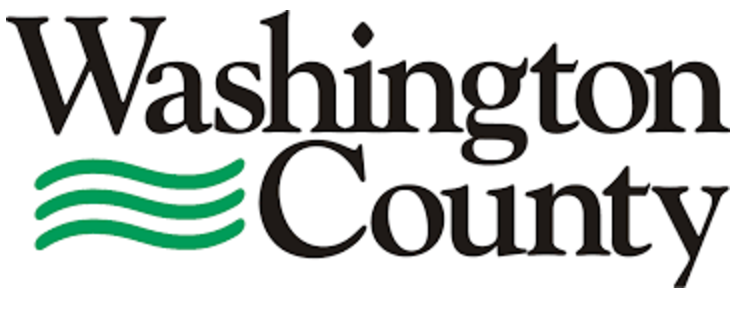Project Facts
This page provides answers to frequently asked questions about the METRO Gold Line bus rapid transit project.

General information
Gold Line Project Fact Sheet: General PDF, 1MB (April 2024)
Gold Line Project Fact Sheet: What is EA PDF, 1MB (February 2019)
Gold Line Overview Video (March 2023)
Project FAQs
What is bus rapid transit?
Bus rapid transit operates similar to light rail transit. Bus rapid transit offers transit customers unique features that deliver fast, comfortable and cost-effective services using bus-only lanes:
- More frequent service
All-day bus service that operates seven days a week. Gold Line will run frequently during midday, evenings, and Saturday, with less frequent service in the early morning, late at night, and Sunday.
- A faster ride
Features that allow a faster ride:
- Pay before you board so the bus leaves the station faster
- Raised platforms help you step or roll on and off easily
- Fewer stops than local routes and bus-only lanes that keep the bus moving
- Buses can “ask” traffic signals for early or extended green lights
- Stations with enhanced amenities
Shelters will provide comfortable waiting space and a variety of amenities: NexTrip real-time departure signs, maps, heat, lighting, bike racks, and enhanced security with cameras and emergency telephones.
- Specialized buses
Buses will be unique and recognizable with wider aisles and additional doors and folding seats to make room for wheelchairs and strollers.
What does "bus-only lanes" mean? Will new lanes be added to I-94?
Gold Line will be Minnesota's first BRT line that operates primarily within bus-only lanes. Bus-only lanes are travel lanes or roads that will only be used by transit buses, and are located north of I-94. These separate lanes will ensure buses are never delayed due to traffic congestion. Approximately 70% of the Gold Line will have bus-only lanes.
Why is Gold Line needed?
More than a bus to downtown St. Paul, Gold Line will connect the east metro to the regional METRO network and connect people across the region to job centers, housing options, other transit lines, and key destinations in the I-94 corridor. Approximately 14% of all households within half-mile from Gold Line stations are without cars, and an estimated 93,000 jobs are located just a half-mile from Gold Line stations.
More details on the need for Gold Line can be found in the Purpose and Need chapter from the METRO Gold Line Environmental Assessment and is available on the Environmental Process page.
How will Gold Line service be different from the existing express bus?
Express buses provide a non-stop bus trip during morning and evening weekday rush hours over the entire 10-mile corridor. Gold Line will provide frequent, all-day transit service seven days a week and will have 16 stations connecting more communities between downtown St. Paul and Woodbury for people traveling in both directions.
Will Gold Line buses be delayed at intersections?
Buses will still stop at red lights, but buses can “ask” traffic signals for early or extended green lights.
Will Gold Line stations have parking?
Yes, Gold Line will have four Park & Ride facilities. New Park & Rides are located at Sun Ray Station in St. Paul, Helmo Station in Oakdale, and Woodlane Park & Ride in Woodbury. The existing Queens Park & Ride in Woodbury will also have parking for Gold Line riders.
What kinds of amenities will stations have?
Gold Line stations will provide a comfortable waiting space and a variety of customer amenities:
- Shelters with on-demand heat
- Benches
- Bike parking
- Raised platform boarding to easily step or roll on and off
- NexTrip real-time departure signs
- Emergency telephones
- Security cameras
- Energy-efficient LED station lighting
- Information about the station, route, and transit system
- Ticket machines to purchase tickets before boarding using cash or credit card, or for recharging a Go-To Card
- Trash and recycling bins
How much will it cost to ride Gold Line?
Gold Line will have the same fares as METRO light rail and local buses. There is no extra charge for the service. Seniors, youth, Medicare card holders and people with disabilities qualify for reduced fares during non-rush hours.
When did construction begin? When will Gold Line open?
Construction began in 2022, and the line will open on March 22, 2025.
What is the cost to build Gold Line? How is it being funded?
The Gold Line budget is $505.3 million. There are multiple funding sources contributing to the capital funding for the project, including Federal Transit Administration (45%), Ramsey County (26%), Washington County (26%), Federal Highway Administration (1%), State of Minnesota (0.5%), and the former Counties Transit Improvement Board (1.5%).
Project history
Studies and Reports
Project Funding Partners
Metro Transit is the lead agency responsible for developing and eventually operating the METRO Gold Line. The project is being developed as a collaboration of public and private partners, who are working together to contribute funding, staff, technical skills, project oversight and connections to communities along the corridor.
The Federal Transit Administration (FTA) provided $249 million through the Capital Investment Grant Program with a Full Funding Grant Agreement awarded in 2023.

Counties Transit Improvement Board (CTIB)
CTIB committed $6 million for the Gold Line's Project Development phase. CTIB voted to disband in 2017, but their grants committing funds to the Gold Line are secured and are being managed by Washington County.

Ramsey County committed $8.5 million for the Gold Line's Project Development phase.

Washington County committed $8.5 million for the project's Project Development phase.

The State of Minnesota committed $2 million for the Gold Line's Project Development phase.

Other Project Partners